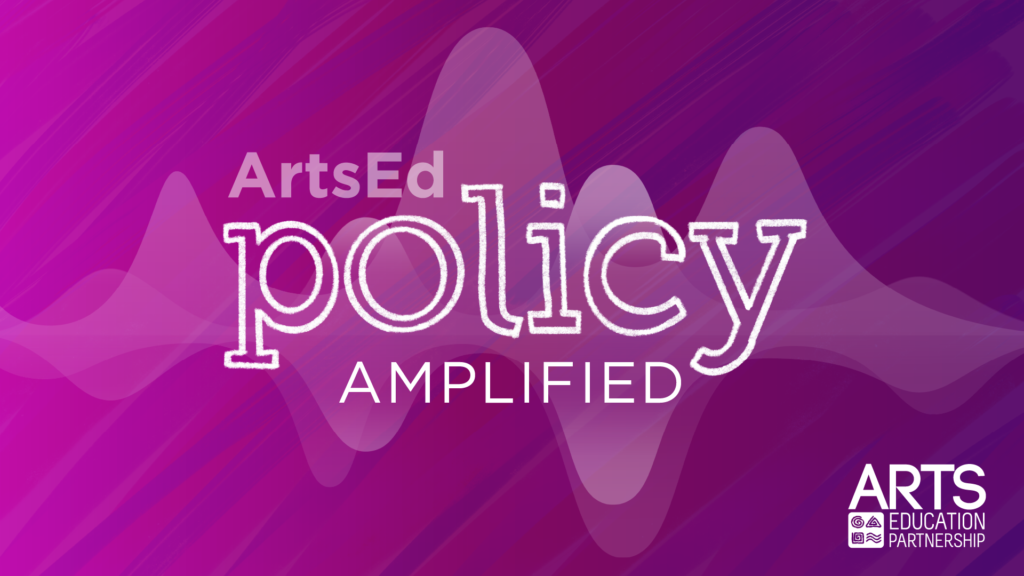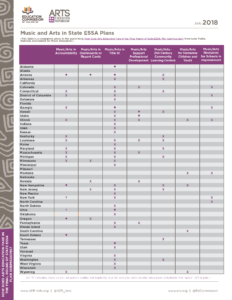How Does Arts Education Fare in the Final Round of State ESSA Plan Submissions?

In the first round of state plans submitted under the Every Student Succeeds Act (ESSA) last spring, 60 percent (eight states) included arts within key areas of their state accountability systems. In the second set of state plans, arts education continues to be found, although in a larger variety of places and spaces. Following is an analysis of where and how states included arts education in this second round.
Twenty-nine percent (11 states) of new state plans acknowledge arts education within accountability systems, which means 35 percent of all plans address access and participation rates in arts education as part of state accountability and/or reporting systems.
Many of the states are conservative in their accountability system designs, keeping their reporting systems focused on the No Child Left Behind indicators of reading and math. Even so, five additional states embrace arts indicators in their accountability systems: Georgia, Kentucky, Maryland, Minnesota and Wyoming. While Kentucky has worked with arts education indicators as part of its state monitoring of schools for several years, this is a new lift for the other four states. Maryland, Minnesota and Wyoming focus on access to arts classes, as well as participation rates for students in arts classes. Georgia is looking not only at access, but also measures of student performance in selected fine arts classes at the elementary and middle school levels.
Along with these five states, New Hampshire, Arizona, Oregon and South Dakota also include the arts in various sections and innovative ways in their accountability systems.
In addition, New York and Ohio are convening stakeholders from the arts education community to determine how to include arts indicators in the future.
More highlights from the second round of submissions:
- Fifty-five percent of state plans (19 states) include arts education within Title IV, Part A, bringing the total to 70 percent of states that identify the arts in this program or describe the overall importance of a well-rounded education.
- Twenty-four percent (nine states) of state plans (and 22 percent of all state plans) make explicit the state’s support for arts education in Title I schools or in school improvement schools.
- Eighteen percent (seven states) of state plans specifically call out arts education as supported through the after-school 21st Century Community Learning Centers program, bringing the total to 24 percent of all state plans.
Arts education appears in a wide range of additional programs, from support of migrant children to rural and low-income school funding options.
As in the first round of plans, states include arts education in a variety of ESSA-funded programs in the second round of submissions, showing that access to and participation in music and arts is expected to be available for all students. These programs include supports for:
- Homeless children and youth. Several states, such as Missouri, Rhode Island and New Hampshire, include language about breaking down barriers to children’s participation in arts activities if the children were identified as homeless.
- Migrant children. Two states (California and New York) include language about ensuring students identified as migrant children have access to arts education. Migrant children are identified as children who move schools throughout the school year in order to be with families who migrate for work, such as farm workers.
- Neglected and delinquent children. Utah’s plan mentions the need for students identified as neglected and delinquent (including those returning to public schools after being in detention) to have access to arts education.
- Rural and low-income schools. Two states (Missouri and New York) mentioned arts education in their state plans in regards to rural and low-income schools. Like supports for migrant children and neglected and delinquent children, these programs receive separate funding under ESSA to support schools with extreme poverty and/or located in isolated, rural areas.
This guest post comes from Lynn Tuttle, director of public policy and professional development at the National Association for Music Education (an Arts Education Partnership partner organization).




